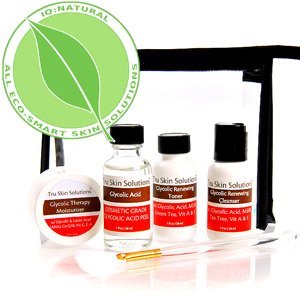Glycolic acid products can be used for a variety of processes, in both industrial and health applications. Although the name makes glycolic acid sound like a highly dangerous chemical, it is, in fact, derived from sugar cane. That does not reduce its effectiveness in industrial processes where glycolic acid is used to remove rust and grease. This industrial application of glycolic acid products obviously involves high concentrations which would be dangerous to the skin. Glycolic acid products for the skin care industry have a mere fraction of the active ingredient of the industrial products.
It is as a skin exfoliant that glycolic acid products have become controversial. In some countries, like the UK, the government has become involved and declared that any glycolic acid products which have a concentration greater than 10% are hazardous. Despite this, there are still manufacturers producing these products with a higher concentration. There are also counter claims from people within the skin care industry that the weak glycolic acid concentrations of below 10% are actually not strong enough to be effective. The larger chemical and cosmetic producers will still not increase the concentration in their glycolic acid products because of the possibility of lawsuits in the light of the government’s opinion. It is left to the consumer to decide whether to believe the government and stay away from the high concentration glycolic acid products, or whether to believe the cosmetic industry and seek out smaller manufacturers.
Commercially available glycolic acid products are used mainly in the treatment of the skin, specifically, the facial skin. They are usually applied in the form of a cream, with the moisture intended to absorb the product into the skin. Once it has been absorbed, the glycolic acid will stick like glue to the dead skin. The solution can then be washed off, resulting in the removal of the dead skin. It is vitally important to wash the skin thoroughly with water, to neutralize any of the remaining glycolic acid.
Glycolic acid is often sold as part of a complete skincare system which will include other alpha hydroxy products. These other products will help to moisturize the skin, and also to neutralize the acidic contents of the glycolic acid. Using this type of complete skincare solution is strongly recommended if you have decided to start a treatment program of glycolic acid products.
There can be side effects to glycolic acid treatment if proper precautions aren’t followed. These risks, however, are most often associated with the more serious products like the glycolic acid chemical peel. The most common of these side effects is a mild burning of the skin that can often resemble sunburn, so it is important to make sure that all of the residue is washed off and that the skin is properly moisturized immediately after treatment. These home chemical peel products should always be used with caution, and never alone in case of problems.
Glycolic acid products are not without their inherent dangers and problems. It is absolutely vital that they are both stored, and used, correctly. Any acid product can be potentially dangerous to young children, especially if it is taken into the body. Make sure that these products are stored out of reach of small children. Also, if you are going to use glycolic acid for acne, be very careful if the condition is in an advanced and aggravated state. Prevention of severe skin disease and the maintenance of healthy skin are the best uses for glycolic acid products.

